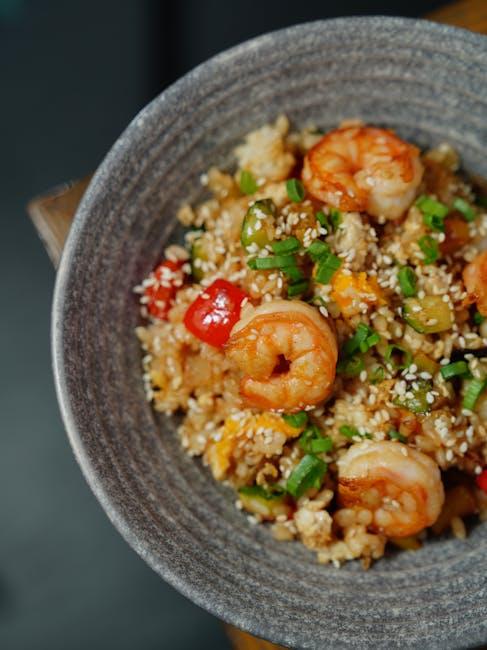Managing your caloric intake doesn’t have to mean giving up the foods you love or enduring a life of bland meals. In fact, with the right strategies, you can enjoy your favorite dishes while still maintaining a balanced diet. This article will guide you through the best tips for managing your caloric intake without sacrificing enjoyment, empowering you to make informed choices that support both your health and your taste buds. Whether you’re looking to shed a few pounds or simply maintain a healthy lifestyle, these practical tips will help you savor your meals while keeping your nutrition goals on track. Let’s embark on a journey to discover how you can have your cake and eat it too—literally!
Mastering Portion Control for Optimal Satisfaction
Embracing portion control doesn’t mean you have to compromise on the joy of eating. It’s about savoring your meals mindfully and making each bite count. Start by using smaller plates to naturally limit the amount of food you serve yourself. This simple trick helps visually trick your brain into feeling satisfied with less. Another effective strategy is to slow down your eating pace. By taking your time, you’ll give your body a chance to recognize fullness signals, preventing overeating.
Incorporate these practices into your routine:
- Measure mindfully: Use measuring cups or a food scale to get a true sense of portion sizes, especially when eating calorie-dense foods.
- Prioritize protein and fiber: Fill half your plate with vegetables and lean proteins to enhance satiety and control hunger pangs.
- Listen to your hunger cues: Eat when you’re truly hungry, not out of habit or boredom, and stop when you’re satisfied, not stuffed.
By implementing these tactics, you can enjoy your favorite foods without the guilt, all while maintaining a balanced caloric intake.

Incorporating Flavorful, Low-Calorie Ingredients
Transform your meals into a vibrant experience by choosing ingredients that are both delicious and low in calories. Herbs and spices are a great place to start. They not only add depth and complexity to your dishes but also keep the calorie count minimal. Consider using fresh basil, cilantro, or dill to enhance the natural flavors of your meals without adding extra calories.
- Spice it up: Add a dash of cumin or smoked paprika for a warm, earthy flavor.
- Freshen with herbs: A sprinkle of fresh mint or parsley can bring brightness to your dish.
- Zest with citrus: Lemon or lime zest can elevate your meal’s taste profile, offering a tangy twist.
Incorporate low-calorie vegetables like zucchini, bell peppers, and spinach as the base for your meals. These ingredients not only contribute essential nutrients but also keep you feeling satisfied. Experiment with different cooking methods, such as roasting or steaming, to unlock new flavors and textures without unnecessary oils or butter.

Mindful Eating Practices for Enhanced Meal Enjoyment
Transform your meals into a sensory experience by focusing on mindful eating practices that amplify both satisfaction and awareness. Begin by creating a tranquil dining environment, free from digital distractions. This allows you to be fully present and appreciative of each bite. Engage your senses by savoring the aroma, texture, and flavors of your food. Notice how your body responds to different tastes and adjust your pace accordingly. Slowing down not only enhances enjoyment but also gives your body time to signal fullness, helping you manage your caloric intake more effectively.
- Chew thoroughly: Aim for 20-30 chews per bite to aid digestion and increase meal satisfaction.
- Practice gratitude: Take a moment before eating to appreciate the effort and resources involved in bringing your meal to the table.
- Portion control: Use smaller plates and bowls to naturally reduce serving sizes without feeling deprived.
- Listen to hunger cues: Differentiate between physical hunger and emotional cravings to avoid unnecessary snacking.
Strategic Meal Planning for Balanced Nutrition
Creating a balanced meal plan is an art that harmonizes taste with nutrition. Begin by focusing on portion control; it’s a powerful tool to manage your caloric intake without feeling deprived. Consider using smaller plates to naturally reduce serving sizes and prevent overeating. Additionally, embrace the concept of mindful eating—savor each bite, eat slowly, and pay attention to your hunger cues. This not only enhances your dining experience but also helps you recognize when you are truly full.
- Incorporate variety: Ensure each meal includes a mix of macronutrients—proteins, fats, and carbohydrates—for sustained energy and satisfaction.
- Embrace plant-based foods: Fill half your plate with vegetables and fruits. They are low in calories but high in fiber, which helps you feel full longer.
- Plan for indulgences: Allow yourself occasional treats by balancing them with lower-calorie meals throughout the day or week.
- Stay hydrated: Sometimes thirst is mistaken for hunger. Drinking water before meals can help control overeating.
By integrating these strategies into your routine, you can enjoy a diverse and satisfying diet while keeping your calorie consumption in check. Remember, it’s not about restriction, but rather about making informed choices that align with your nutritional goals.
